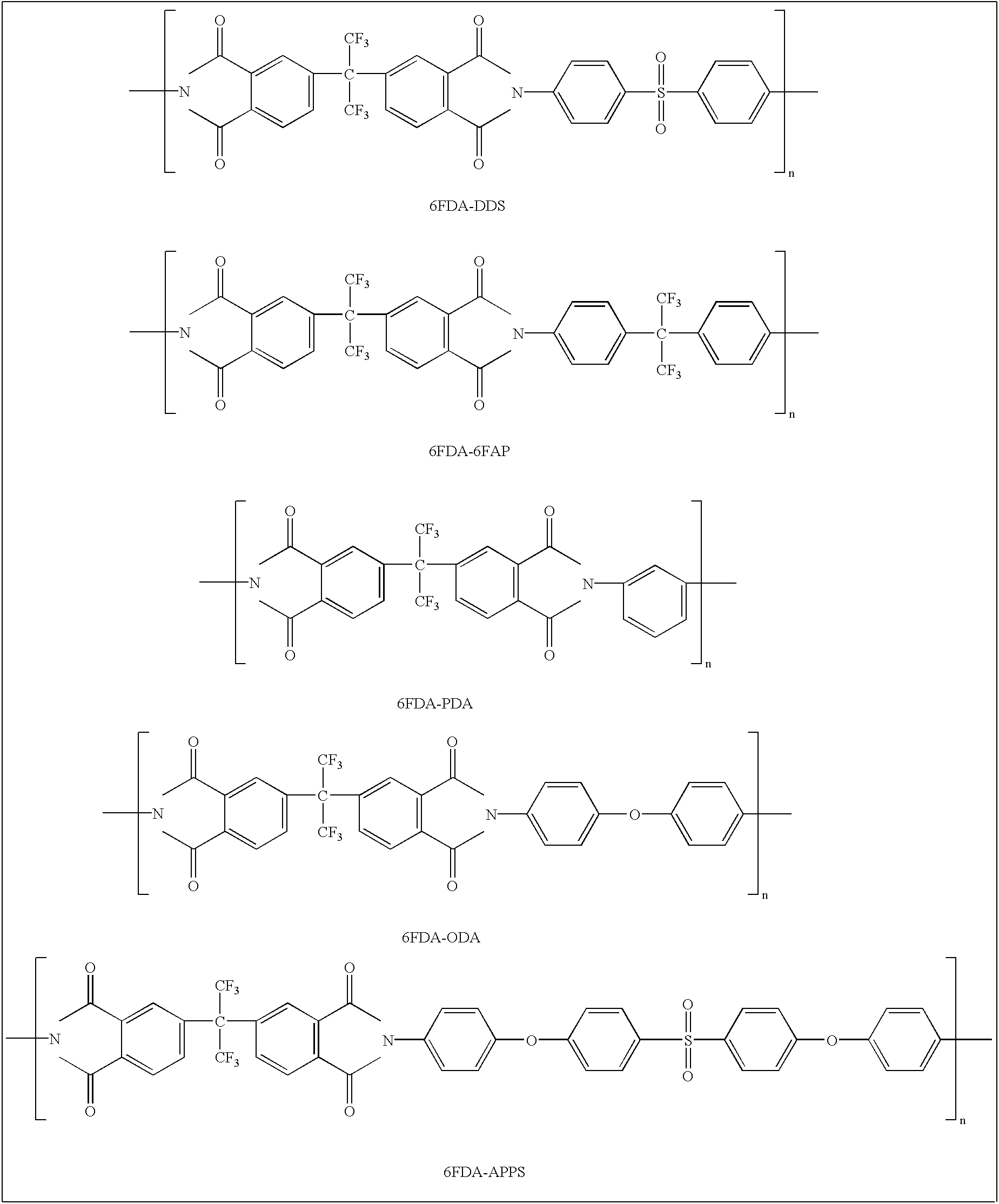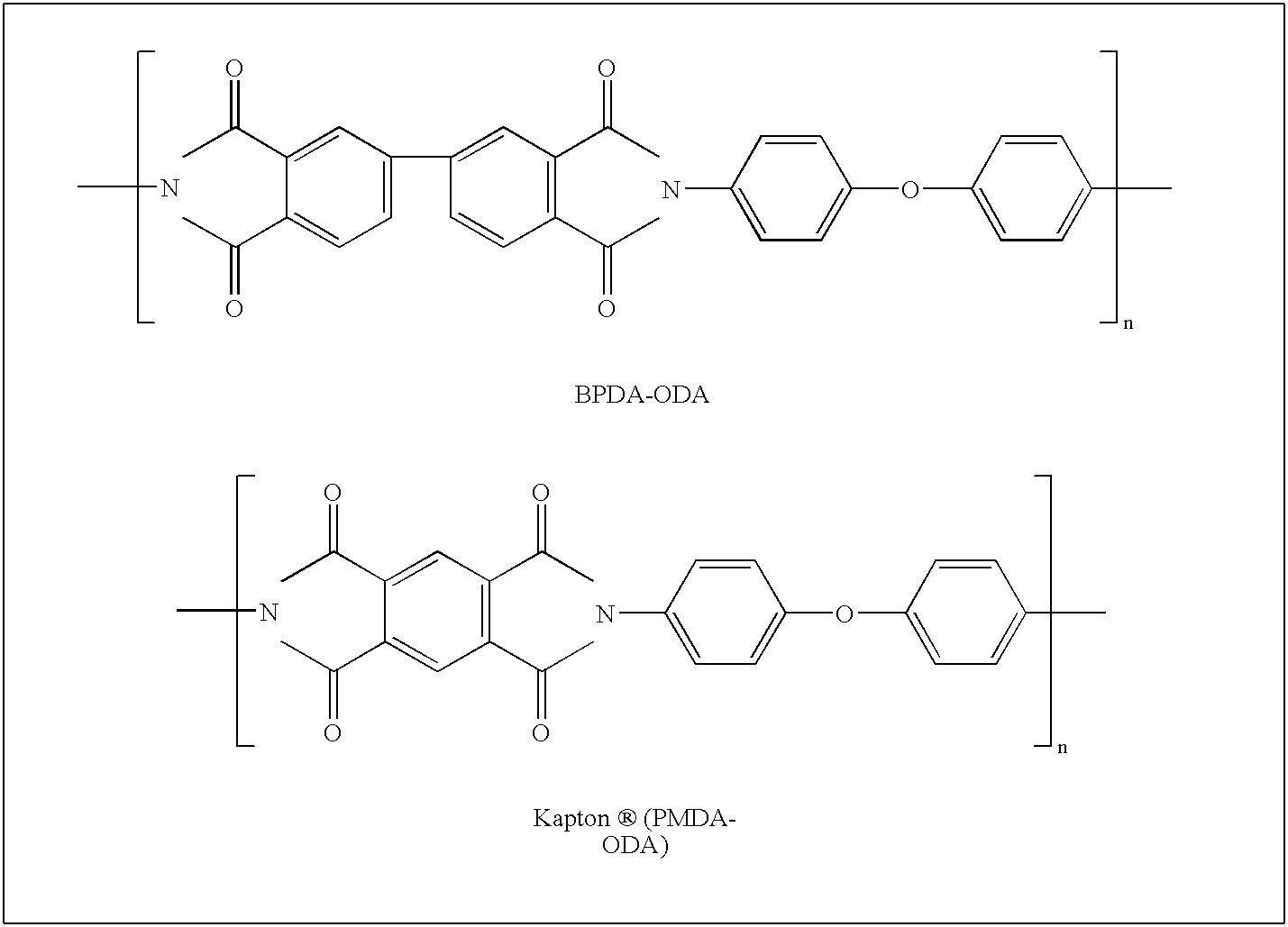Gas separation membrane and method of producing the same
a technology of gas separation membrane and gas separation membrane, which is applied in the direction of membranes, filtration separation, separation processes, etc., can solve the problems of poor chemical resistance and heat resistance, poor practicability of cellulose acetate membrane, and poor heat resistan
- Summary
- Abstract
- Description
- Claims
- Application Information
AI Technical Summary
Benefits of technology
Problems solved by technology
Method used
Image
Examples
example
Example 1
Synthesis of Fluorine-Containing Polyimide
Using dimethylformamide (DMAc) as a polymerization solvent, 5.33 g (0.012 mol) of 2,2'-bis(3,4-carboxyphenyl)hexafluoropropane (6FDA) and 2.97 g (0.012 mol) of 3,3'-diaminodiphenylsulfone were adjusted to be equimolar, and both monomers were then dissolved into DMAc (35.4 ml) so that their weights became 15 wt %. The mixture was reacted for 15 hours under a nitrogen atmosphere to synthesize polyamide acid. Then, acetic anhydride and triethylamine were added (five-times moles of the monomers), and chemical imidization reaction was carried out for 24 hours to synthesize the fluorine-containing polyimide of interest.
example 2
Preparation of Asymmetric Fluorine-Containing Polyimide Membrane
Fluorine-containing polyimide (12% by weight) was dissolved in a mixed solvent of dichloromethane (55% by weight), 1,1,2-trichloroethane (23% by weight) and butanol (10% by weight). The obtained fluorine-containing polyimide solution was cast on a glass plate, and immediately it was adjusted by a doctor blade so as to have a membrane thickness of 250 .mu.m. Thereafter, it was allowed to stand for 15 seconds on the glass plate so as to evaporate the solvent from the surface. Then, it was immediately immersed into a coagulation bath (methanol) to induce phase separation. The prepared membrane had an asymmetric structure composed of a complete non-defective surface skin layer on its surface and a porous layer which supports the surface skin layer, and the surface skin layer had a thickness of approximately 10 nm.
example 3
Ion Implantation into Samples
Using a 200 kV ion implantation apparatus (The Institute of Physical and Chemical Research), a sample having a square of 30 mm (asymmetric fluorine-containing polyimide membrane obtained in Example 2) was irradiated with a dose of 1E12 (1.times.10.sup.12) ions / cm.sup.2, at an ion beam current of 3 .mu.A / cm.sup.2 or less, and with an acceleration energy of 50, 100 or 150 keV.
PUM
| Property | Measurement | Unit |
|---|---|---|
| temperature | aaaaa | aaaaa |
| temperature | aaaaa | aaaaa |
| temperature | aaaaa | aaaaa |
Abstract
Description
Claims
Application Information
 Login to View More
Login to View More - R&D
- Intellectual Property
- Life Sciences
- Materials
- Tech Scout
- Unparalleled Data Quality
- Higher Quality Content
- 60% Fewer Hallucinations
Browse by: Latest US Patents, China's latest patents, Technical Efficacy Thesaurus, Application Domain, Technology Topic, Popular Technical Reports.
© 2025 PatSnap. All rights reserved.Legal|Privacy policy|Modern Slavery Act Transparency Statement|Sitemap|About US| Contact US: help@patsnap.com


